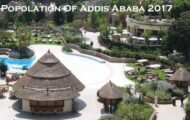Calabarzon is generally known as Southern Tagalog Mainland and assigned as Calabarzon Region. It is a regulatory locale in the Philippines. It contains five areas: Quezon, Laguna, Cavite, Batangas and Rizal. Its local center is Calamba in Laguna.

Located only south of Metro Manila in south Luzon, the locale is the most crowded in the Philippines. Historical occasions happening in the Calabarzon area goes back to the year 900 with the presence of the Laguna Copperplate Inscription, which referenced the cancellation of an obligation as authorized by the Lakan of the Kingdom of Tondo. Locals in Batangas have populated the Pansipit River and have been in trade with China amid the thirteenth century. The Southern Tagalog district was populated by autonomous towns made out of 50 to 100 families called barangays. It is one of the scenic places and has a lot to offer for tourists.
POPULATION OF CALABARZON IN 2017:
Talking about population, in order to check out the population of Calabarzon in 2017, we need to have a look at the population of the past 5 years. They are as per the following:
- 2012 – 10.13 Million
- 2013 – 11 Million
- 2014 – 12.3 Million
- 2015 – 14.4 Million
- 2016 – 16.1 Million
Getting from the past data of Calabarzon from the year 2012-16, it has been noticed that there has been an increase of 5.97 Million in the past 5 years. Therefore, it has been seen that every year the population increases by 1.194 Million. Hence, the population of Calabarzon in 2017 is estimated to be 16.1 Million + 1.194 Million = 17.294 Million. So, the population of Calabarzon in the year 2017 as per estimated data = 17.294 Million.
CALABARZON Population 2017 – 17.294 Million (Estimated)
DEMOGRAPHY OF CALABARZON:
A hugw number of people living in Calabarzon are Tagalogs. It is assessed that around 5.8 million Tagalogs live in Region IV-A. Calabarzon is additionally home to a sizable number of individuals with Chinese and Spanish descent by virtue of Chinese migration and the presence of Spanish Colony, separately. As a result of this, greater part of Tagalog people living in Calabarzon likewise speak the
Tagalog dialect. Filipino, being a form of Tagalog, is additionally predominant in the area. English is additionally spoken all through Calabarzon and is the dialect of business and training. In Cavite, Creole language is likewise spoken. A large number of inhabitants in Calabarzon is a part of the Roman Catholic church which represents 80% of the national population.
POPULATION DENSITY AND GROWTH OF CALABARZON:
The population density of Calabarzon is 850 persons per square kilometer. The population growth rate somewhere around 2000 and 2010 of 3.07% diminished from the growth rate somewhere around 1990 and 2000 of 3.91%, a pattern which matched with the rest of the country. The population growth in the late years has been on the slow side. It has been estimated that Calabarzon will have a higher population growth rate in the years to come according to reports.
FACTS ABOUT CALABARZON:
- Calabarzon is the second biggest donor to the national GDP, representing 17% of the GDP. The locale boasts a 2.1% inflation rate, lower than the national average of 3%.
- Antipolo is the most crowded city in Calabarzon Region and is the seventh most crowded city in the Philippines while San Pedro City is the most densely populated city in the entire locale.
- The large number of individuals living in Calabarzon additionally speak the Tagalog dialect. Filipino, being an adaptation of Tagalog, is additionally transcendent in the locale. English is additionally spoken all through Calabarzon and is the dialect of business as well as education.
- The locale is additionally home to a considerable number of mountains, for example, Mount Makiling in Laguna and Mount Macolod in Batangas. Makiling and Banahaw are particularly famous to visitors and mountain climbers.
- Historical occasions happening in the Calabarzon locale goes right back to the year 900 with the presence of the Laguna Copperplate Inscription, which referenced the cancelling of an obligation as authorized by the Lakan of the Kingdom of Tondo. Locals in Batangas have populated the Pansipit River and have been in heavy trade with China amid the thirteenth century.



